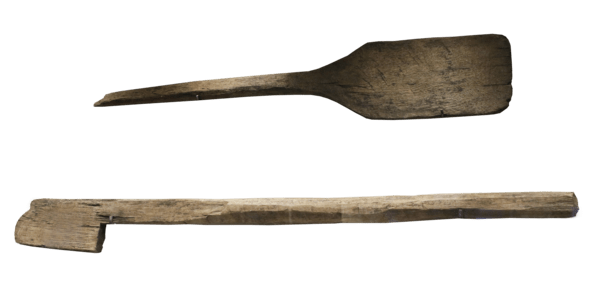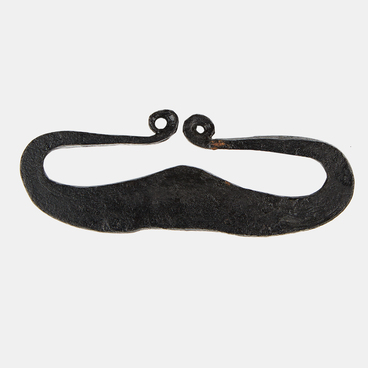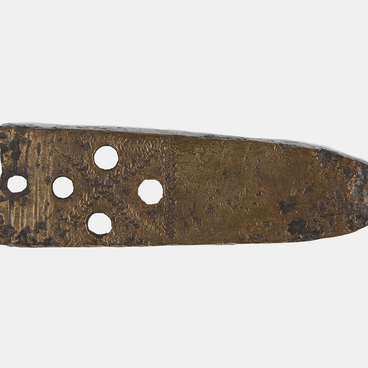Archaeological objects made of wood, plants, bones, and leather have been found in the cultural layer of the Tula Kremlin. The items date to the 16th–18th centuries and come in different states. The degree of their preservation depends on humidity, soil composition and the depth of their location. Scientists treat all finds from organic materials with special solutions and preserve them. Wooden archaeological artifacts contain 90% of water and can change shape, size, or even deteriorate rapidly when exposed to changing environmental conditions.
Wood was the main working material in Rus. It was used to build houses, churches, fortresses, pavements, and courtyards. There are about 80,000 oak piles in the foundation of the walls and towers of the Tula Kremlin. Wood was also used to make home furniture, household items, tools, vehicles, and their parts.
A shovel is a basic household tool used to dig, clear the space, and move soil from one spot to another. The standard Old Russian shovel was made from a single piece of wood; the blade and handle were carved from aspen or birch, less often from linden, maple, and oak. To make a shovel, craftsmen used a knife, as well as a light hatchet and a scythe blade knife.
The Tula Kremlin Museum houses several types of shovels: for digging the ground, as well as for laying and raking out loose, granular materials. People also used yard shovels, which were also called dirty, “black” manure shovels, baking and oven shovels, as well as deep shovels for liquids resembling large ladles.
Digger shovels had a specially shaped working blade — rectangular, trapezoidal, or triangular. The lower working edge was straight or rounded. The shovel was 12–16 cm wide and 25–30 cm high. The shaft could be up to one meter long.
To facilitate digging in bedrock and other dense soils, the lower part of the shovel was sometimes reinforced with iron or steel. But even without metal parts, oak shovels were quite strong and sharp. To make it easier to insert the shovel into the ground, people used one foot to push down on the right step at the top of the blade, which is why digger shovels always had one horizontal step.



